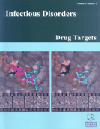
Full text loading...
We use cookies to track usage and preferences.I Understand
Hygiene has been identified as an important step in anticipating health-related pollution, with conflicting reports about consistent sanitation standards in the nation. This narrative review of published studies has led to the discussion of hand hygiene and health practices, as well as the identification of necessary methods that are available in low and middle-income countries. An effective survey of accessible information is conducted in this way based on review questions. A number of 372 articles were found on the web, and 32 articles were used in the final analysis. Overall, the standard of hand hygiene is set at 20.49%. Difficulties identified for the people in low or middle-income countries are poor awareness and sound information about hand hygiene, lack of resources including water, soap, hand scrubbing gel, etc., as misinterpretations related to hand hygiene practices. People are paying more attention to healthcare-related illnesses as it becomes increasingly clear that most of them may be prevented. The free evidence-based practice states that to lower the danger of contamination, hand hygiene should be properly adhered to. The difficulties recognized in this review are reliable, with the discoveries of studies that have been led somewhere else. By conducting a basic examination of the “Clean Care is Safer Care” as an excellent arrangement of WHO’s global initiative activity on patient well-being programs, developing nations will have more time to consider the essential approaches for the use of fundamental disease prevention exercises in our health care settings.

Article metrics loading...

Full text loading...
References


